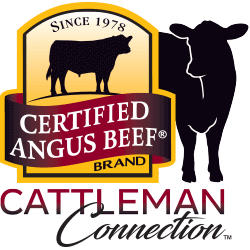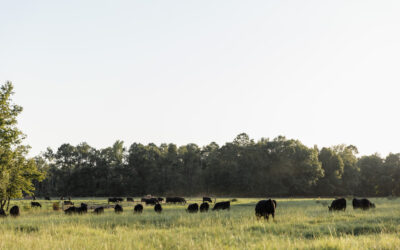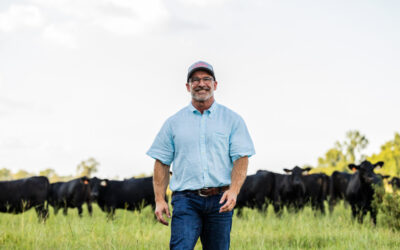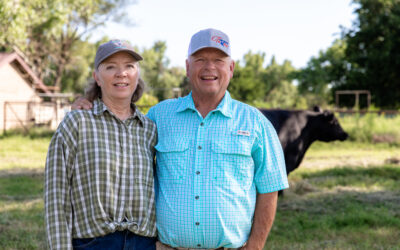
Excellent and getting better
The Angus world wonders, how good can these cattle get?
by Steve Suther
It’s fun to hit the target. Osborn Farms, Savannah, Mo., repeated its 2010 achievement with even better numbers as the Certified Angus Beef LLC (CAB) 2011 Quality Focus Award winner for partner yards with less than 15,000-head capacity.
This is just a 600-head yard that enrolled 535 head with CAB last year, but the point is 90% of those were accepted for the Certified Angus Beef ® (CAB®) brand, including 28% CAB Prime.
An hour spent talking shop with owner-manager John Osborn and his longtime consultant and cattle partner Pete Mitts is like an hour on the Blue Collar Comedy Tour. Many of the jokes are inside, obscure, personal insults or physiological, but you catch the drift and join in the grins.
In reference to the CAB acceptance, Osborn will deadpan, “Is that good?” Mitts completes the thought, “Because we know we can do better.”
There’s evidence to support that. If you followed the AngusSource® Carcass Challenge last year, you might recall their champion pen of 42 heifers went 100% CAB and 55% Prime. The September 2010 harvest date fit the contest year for this June-through-May annual CAB award, too.

Still, the award wasn’t automatic or easy. This is the fourth consecutive year that a Missourian won the category, and the top three contenders nationwide were in Missouri this time as well.
The other two were Circle A Feedlot, Huntsville, Mo., and Performance Blenders, Jackson, Mo., and depending on the week, each of them spent time in the top spot. The contest was not decided until the last few weeks of May.
All three feature cattle of known genetics.
Osborn and Mitts have proven that their already excellent cattle will keep getting better. They all trace back to bulls from Green Garden Angus, Lorraine, Kan., genetics stacked in cow families backed by Mitts’ no-nonsense records and the duo’s program of low-stress management.
That’s low stress on the cattle, they would point out. Stress for the cattlemen is sometimes unavoidable in these days of volatile markets.
They find time to get away from it all sometimes. Mitts and his wife Lois have a fishing boat, and sometimes they travel to the Missouri lake country or down to his western Oklahoma home county where son Miles now works at another CAB partner yard.
Osborn and his wife Toni got away from the farm Sept. 20-22 to accept the award at the CAB Annual Conference in Sunriver, Ore. That was after a tractor pulling season when he and son Joel like to see what their somewhat modified John Deere models can do for fun.
When it comes to performance and cattle, these guys are all business. They know their pool of 1,200 related cows. They either own or used to own most of them, and all current owners are friends, neighbors and associates. They know the market is crazy, but they also know carcass data feedback still runs the engine of herd improvement and keeps it on track.
As long as Osborn Farms can feed these predictable cattle, no current quality records will be safe. Fair warning.
You may also like
Healthier Soils and Stronger Herds
Effective land stewardship requires an understanding of how each decision affects forage growth, cattle performance and long-term stocking rates. When land is the foundation of the business, producers are more likely to invest time and resources into managing it intentionally.
Smitty’s Service on CAB Board
Lamb continues to find himself struck by just how far-reaching the Angus breed has become. The brand’s growing demand and rising prime carcasses left a strong impression. He hopes everyone recognizes the vital connection built between consumers and Angus producers. Humbled by the opportunity to serve, Lamb reflects on his time as chairman with gratitude.
Zybach Angus Receives Certified Angus Beef Progressive Partner Award
Steve Zybach’s vision for smaller Angus producers to get more value for their calves through feeder calf sales with value-added programs led him to be recognized as the 2025 CAB Progressive Partner.



